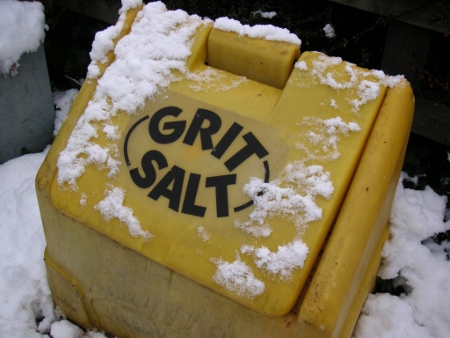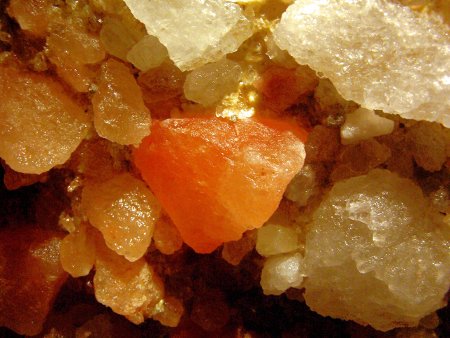Almost every day I walk past this yellow grit container. I’ve never really paid attention to it before, but it’s certainly in the news at the moment.

Why do we grit roads?
The term “grit” is a bit of a misnomer and an ambiguous term. The “grit” used on roads is actually rock salt, known properly as halite.

Halite is the mineral form of sodium chloride, the same salt that’s used to season food. Most of the UK’s halite comes from Winsford Rock Salt Mine in Cheshire in the North West. You can see the yellow gritting vehicles at the bottom of the map below.
Gritting roads is all about melting points. Water begins to freeze below 4°C, so if the ambient temperature is anywhere below 4°C any water on the roads will turn to ice, which is very slippery and cannot be pushed away by tyre tread.
Spreading salt on the roads causes it to mix with the water to produce brine. The saltier the brine, the lower the melting point. For example: a mixture of 30g of salt per 1000g of water lowers the melting point to −1.6°C. Now imagine the ambient temperature is 0°C: any pure water on the road will freeze but the salty water will remain a liquid.
Unfortunately there is a limit to salt’s usefulness. To make the melting point as low as possible you must add as much salt as possible and supplies are limited. Even a completely saturated solution, a totally impractical measure using a huge amount of salt (23.3% salt by weight) only has a melting point of −21.1°C, making the use of rock salt pointless below this temperature. Realistically it would be impractical and very difficult for councils to use rock salt to cope with temperatures much below −10°C.